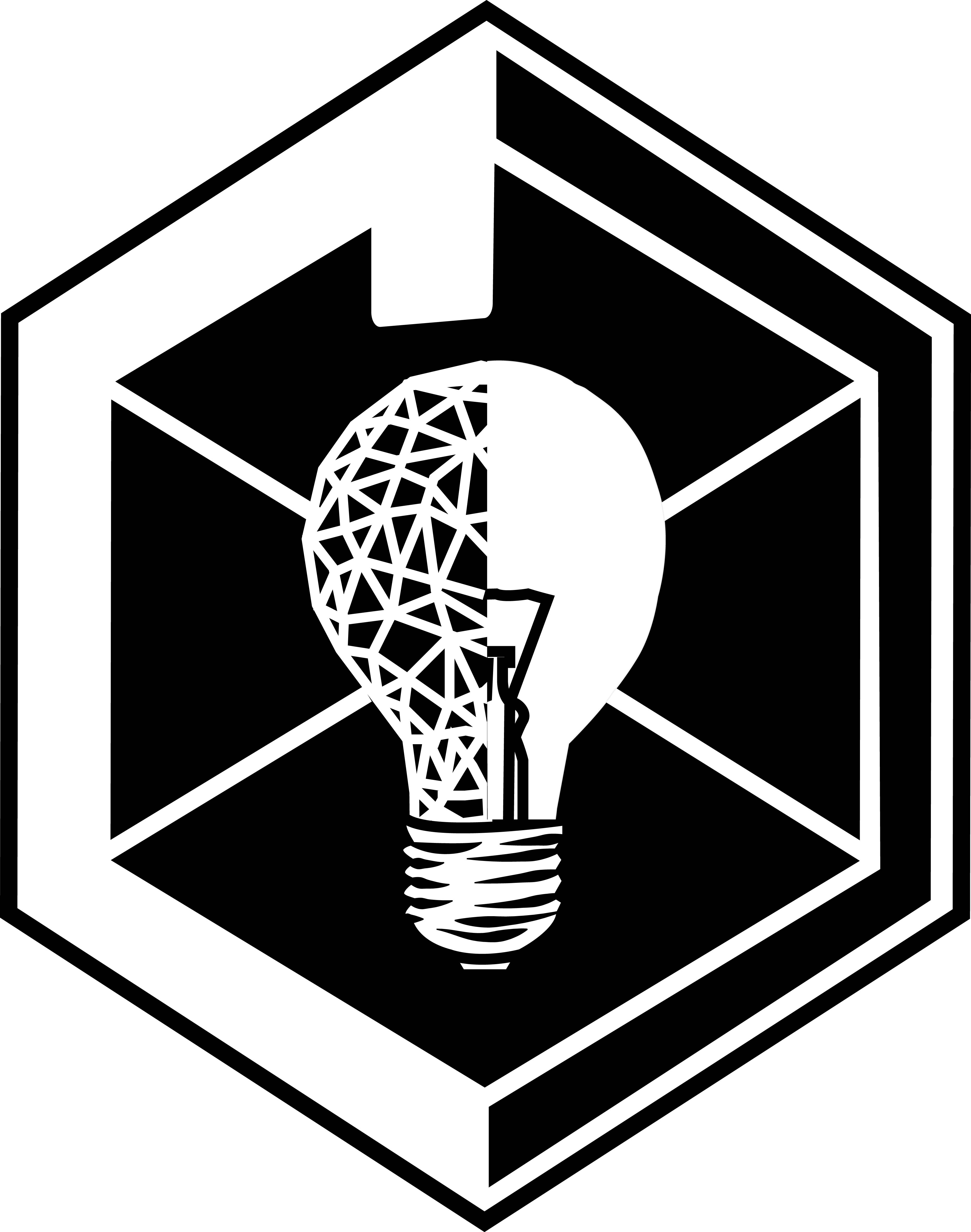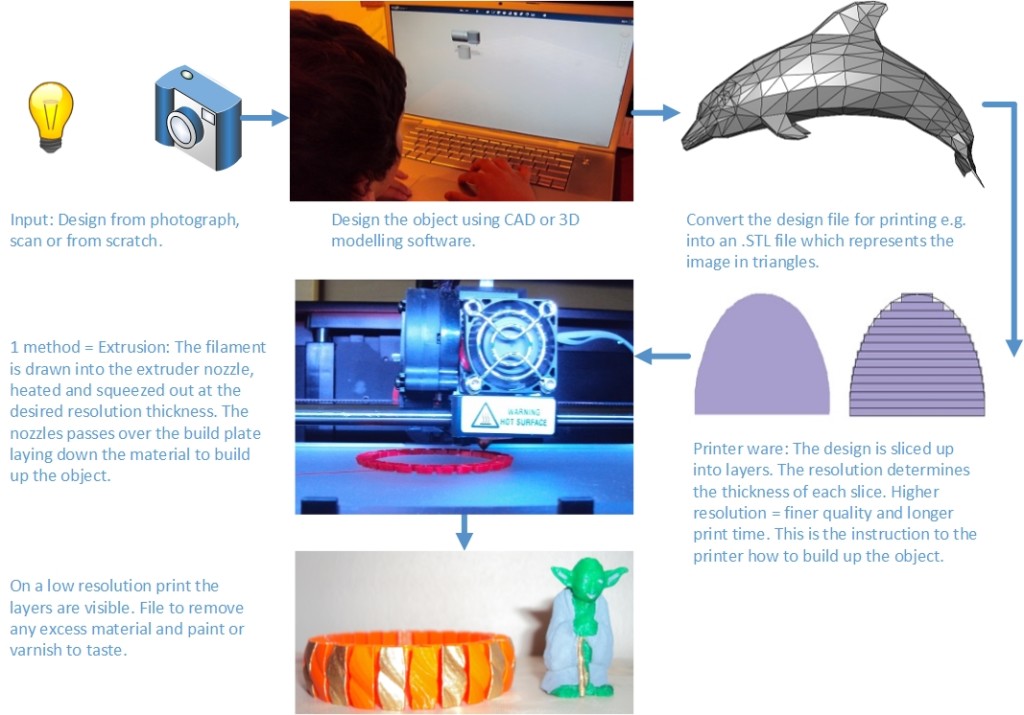What is 3D printing?
Three-dimensional printing, also known as additive-layer manufacture is all about building up an object, layer-by-layer from a digital design file. The design is sliced up into thin sections which the printer then deposits, solidifies, binds or fuses, layer on-top of layer until the object has been completely built up. It\\\’s not a new technology, the first printers were about in the early 1980s. What started out as rapid prototyping for industry has moved into the realms of architecture, medicine, education, business and the consumer world. This has been widely assisted by print services and the explosion onto the market of desktop printers at affordable prices.
3D print technologies
The term 3D printing covers an array of technologies, the key difference being how the material is layered and solidified.
Slicing
In order to print an digital design it must be first sliced into thin horizontal cross sections to generate a toolpath for the printer to follow.
Stereolithography (SLA)
The pioneer technology created by Charles W. (Chuck) Hull in the 1984. A UV laser is beamed into a VAT of liquid photopolymer drawing out and hardening a slice of the object to be created. The build surface is then lowered and another layer of the photopolymer is applied which is in turn hardened and bonded to the previous layer. The process is then repeated for each slice until the physical model is completely built up.
Selective Laser Sintering (SLS)
Granules of powdered material such as nylon (polyamide), ceramic, glass or silver… are scooped into a vat. A roller spreads a smooth, flat layer of the material onto the build plate. Each slice of the model is then fused together and onto the previous layer using a laser as it traces out the required shape. Surplus powder falls into a container for reuse. The process is repeated for all the layers in the object. Upon completion the object is hidden inside the part bin filled with loose powder. Excess powder is blow, vacuumed or dusted of.
Developed at MIT this technology can produce full colour prints. Thin Layers of powder are solidified using a binder glue sprayed from inkjet print heads. The secret of the colour is in the binding solvent – it is pigmented cyan, magenta, yellow and clear mixed to create full colour on the shell of the part. As many traditional 3D modelling software does not handle colour data, specific software is required to add the colour data to the 3D part.
Polyjet 3D printing extends 3DP and SLS by layering of liquid photopolymer onto a build tray and hardening them with UV light. Multiple canisters hold different materials such as rubber-like or ABS-like plastic. This allows printing and even compositing of different materials in one print run. Materials appear to have been overlayed on each other but are in fact all part of the one build job.
FDM (Fused deposit modelling) or FFF (Fused filament fabrication)
Plastic filament (PLA or ABS) is pulled from a real up through a heated metal nozzle into a semi viscous state and then extruded onto the build plate to trace the form of the slice. The build plate then moves down fractionally and another layer is extruded and placed on top. The filament bonds to the previous layer as it cools. 100% of the build material passes through a nozzle. Multiple extruders allow for alternating colours or even mixing filament colours to create the colour of choice per layer.
This method can even use standard sheets of paper. A layer is created as a laser cuts out the shape of the slice on a sheet of paper, moves the build plate down and rolls a fresh sheet of material over the top. The new sheet is glued to the one below and the process repeated to produce a low cost 3D object. It is full colour print as each sheet of paper is pre-coloured with a penetrating ink.
Input and Modelling
A digital design (CAD) model is exported from 3D modelling software packages such as
Maya, Rhino, Google Sketchup, 123D, Tinkercad, Blender, 3D Tin or OpenSCAD into a 3D printable format (usually .stl).
A slicer converts a 3D design file into G code which are the printing instructions for the machine.
Process – FDM

